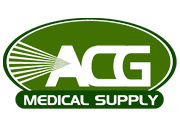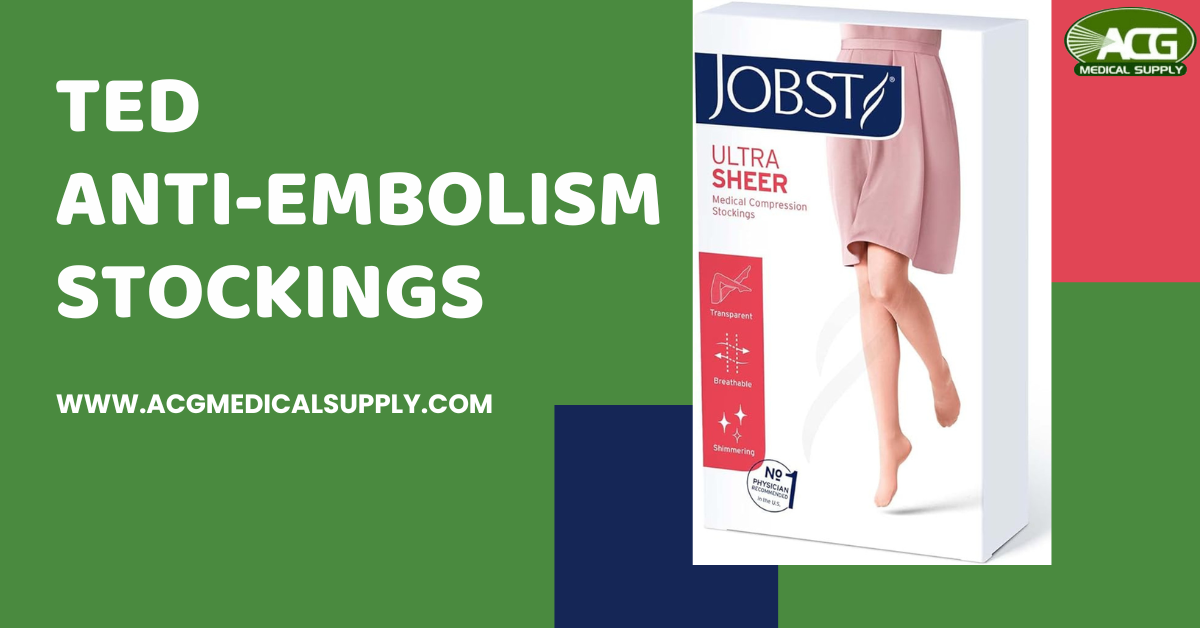Taking care of your legs is something many of us don’t think about—until we have to. Whether you’ve just had surgery, find yourself on your feet all day, or struggle with swelling, the right support can make a huge difference in how you feel. But with so many options out there, it can be tricky to know which one is best for you. That’s where TED Anti-Embolism Stockings and compression stockings come in. While they both provide support, they do so in very different ways.
In this blog, we’ll help you understand the key differences, so you can choose the right option to keep your legs feeling healthy and strong.
What Are TED Anti-Embolism Stockings?
TED Anti-Embolism Stockings, often called TED stockings, are specifically designed for people who are bedridden or recovering from surgery. Prolonged immobility can slow down blood flow in the legs, increasing the risk of blood clots or deep vein thrombosis (DVT).
TED stockings use gentle, graduated compression, which is tighter at the ankle and eases up the leg. This design keeps blood moving and reduces clotting risks. Doctors commonly recommend these stockings for short-term use during hospital stays or post-surgical recovery.
If you’re someone who is confined to bed for a while, TED stockings are like a safety net for your circulatory system. They’re not meant for everyday use, but they play a crucial role during specific recovery periods.
What Are Compression Stockings?
On the other hand, compression stockings are made for people who are on their feet a lot or dealing with swelling or leg discomfort. Whether you’re dealing with varicose veins, swelling from pregnancy, or just need extra support after a long day of standing or sitting, compression stockings can help improve circulation and reduce swelling.
Compression stockings come in all sorts of styles and compression levels. You can find options like thigh-high compression socks for full-leg support or lighter support socks for everyday comfort. There are also medical-grade options like Jobst UltraSheer Stockings, which provide extra compression for people dealing with more serious conditions like chronic venous insufficiency or lymphedema. For those with diabetes, JOBST SensiFoot Diabetic KNEE Socks are a great option, offering gentle support and a soft, breathable fabric that’s kind to sensitive skin.
What’s the Difference Between TED and Compression Stockings?
While both types of stockings serve the purpose of improving circulation, the key differences lie in their intended use and compression levels.
Purpose: TED stockings are specifically designed to prevent DVT during periods of immobility, such as during post-surgery recovery or hospital stays. On the other hand, compression stockings are for individuals who are mobile and looking to relieve symptoms of vein-related conditions like swelling or varicose veins.
Compression Levels: TED Anti-Embolism Stockings generally offer lower compression, while compression stockings can range from light to high compression. This makes compression stockings suitable for a broader range of issues, including managing swelling and improving blood flow in active individuals.
Design: TED stockings are usually knee-length, while compression stockings come in various lengths, such as knee-high, thigh-high, or full-leg options, like thigh-high compression socks. This allows for more versatility depending on your specific needs.
Which One Should You Choose?
Choosing the right medical stockings depends on your situation. If you’ve just had surgery or are going to be in bed for a while, TED Anti-Embolism Stockings are the better option to prevent blood clots. If you’re dealing with swelling, tired legs, or varicose veins, compression stockings are a great choice for extra support and comfort.
If you’re looking for something for everyday wear, you might want to try Jobst UltraSheer Stockings or JOBST SensiFoot Diabetic KNEE Socks. For full-leg support, thigh-high compression socks are a great option. You’ll also find support socks that are perfect for wearing all day, whether you’re working, traveling, or just need a little extra comfort.
Conclusion
Choosing between TED Anti-Embolism Stockings and compression stockings doesn’t have to be confusing. It all comes down to your specific needs. If you’re recovering from surgery or spending a lot of time in bed, TED stockings are your best bet. If you’re dealing with swelling or need some extra support during the day, compression stockings will offer the relief you need. For a wide range of options, from thigh-high compression socks to Jobst UltraSheer Stockings, visit ACG Medical Supply and find the right pair of stockings for you. Taking care of your legs can make a big difference in how you feel every day, so make sure you choose the right support.

